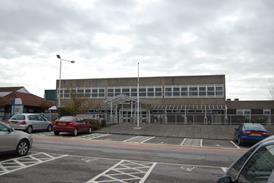Prior to primary care trusts being dissolved, their intellectual property rights will need to be transferred to an appropriate home, says Kathryn Robinson in the first in a series of articles for HSJ.
Primary care trusts should be considering where and how to transfer their intellectual property rights to a suitable home, prior to dissolution on 1 April 2013.
These valuable legal rights will probably be manifested in a product or service that has been created by the PCT or its staff. These could include a commissioning programme, bespoke software devised to meet the PCT’s requirements but which could have wider commercial applications, a hosted service organisation or a brand or mark that is well recognised in the community.
On dissolution, a statutory transfer order will transfer these assets, most probably to the clinical commissioning groups that will take over that PCT’s commissioning functions. So, yes, a PCT could leave the ultimate destination of its intellectual property (and the associated products or services) to be dispensed in accordance with the transfer order.
However, PCTs should be using the time between now and 1 April 2013 to approach the issue with more care, by taking stock of the intellectual property that they own or have a share in, determining which products or services have a wider commercial application or need to be safeguarded for the NHS or the locality, and determining where those rights would best belong to safeguard them in the future.
Where could the rights go to, if not to the CCGs? There are other options in terms of where PCT intellectual property rights could go.
Clinical support services (for the different PCT areas) are going to be hosted initially by the NHS Commissioning Board. For the purpose of making additional income available for the health service, the board will have the power to acquire, produce, manufacture and supply goods and, importantly, to develop and exploit ideas and exploit intellectual property (introduced under section 23 of the Health and Social Care Act 2012).
The board will also have the power to form, or participate in, the formation of companies or to invest in companies. This will mean that the board may be better placed than a CCG to hold intellectual property assets that have national significance, for example, because the rights are capable of widespread use within the NHS (not just local use) or because a project attached to rights has potential to be rolled out nationally or to a wide geographic area.
In contrast, CCGs will be area-specific and may have little opportunity or resource to exploit a product or service. However, they also have powers to participate in companies.
Transfer for value
Other possible recipients include NHS Shared Business Services, a charity or social enterprise, a newly formed company body that could be owned by a wide range of NHS stakeholders or even a foundation trust acting under a hosting arrangement.
Ultimately a company may be the best solution, as it enables a wider range of stakeholders to hold an interest, yet is flexible and provides longevity. There are also clear statutory permissions for CCGs and other NHS bodies to hold shares in companies.
While PCTs do have the power to transfer the ownership of assets to a third party, as public bodies PCTs need to demonstrate that assets that have a value are disposed of for value, unless an alternative equivalent benefit can be demonstrated.
Any disposal not at value would need to be justified by an alternative benefit. Administrative convenience would not be sufficient.
However, the legal ownership of intellectual property rights could be replaced by a right to receive income (by way of a licence fee) and that would constitute a sufficient benefit.
Accordingly, the legal ownership of the rights and the long-term benefit could be transferred to another organisation in return for a right to receive a future income stream through a licence fee. The right to that income would then transfer to the successor bodies under the transfer order on dissolution.
While certain types of intellectual property (copyrights and unregistered designs) require no further “formalities” (things that have to be done to make these rights good against others) following their transfer, other types of intellectual property (patents, trademarks and registered designs) require the new owner to request an update to the patent, trademark or design registers (as the case may be) following the transfer of these rights.
The update to the relevant register is solely to notify the Intellectual Property Office (which is responsible for maintaining these registers) of the new owner and the new owner’s address.
For transfers of patents and trademarks, if the IPO is not notified of the transfer (and the relevant register is not updated with the new owner’s name and address details) within six months of the statutory transfer order (or other date of intellectual property transfer), the new owner will lose the right to claim damages if a third party infringes the new owner’s patent or trademark rights, unless the new owner has a very convincing argument why it did not notify the IPO sooner (see section 68 of the Patents Act 1977 and section 25(4) of the Trademarks Act 1994).
Recording ownership
This is a harsh system, but it is a process that has been designed to ensure that people update the registers, because the registers are a record to the world of what intellectual property is owned in the UK.
The registers are searchable by anyone at any time (online or in person at the Intellectual Property Office) with the aim of anyone being able to find out about what kind of rights other people own, so as to avoid infringing other people’s rights where possible.
Kathryn Robinson is an intellectual property lawyer with healthcare specialist solicitors Hempsons, k.robinson@hempsons.co.uk.







































No comments yet